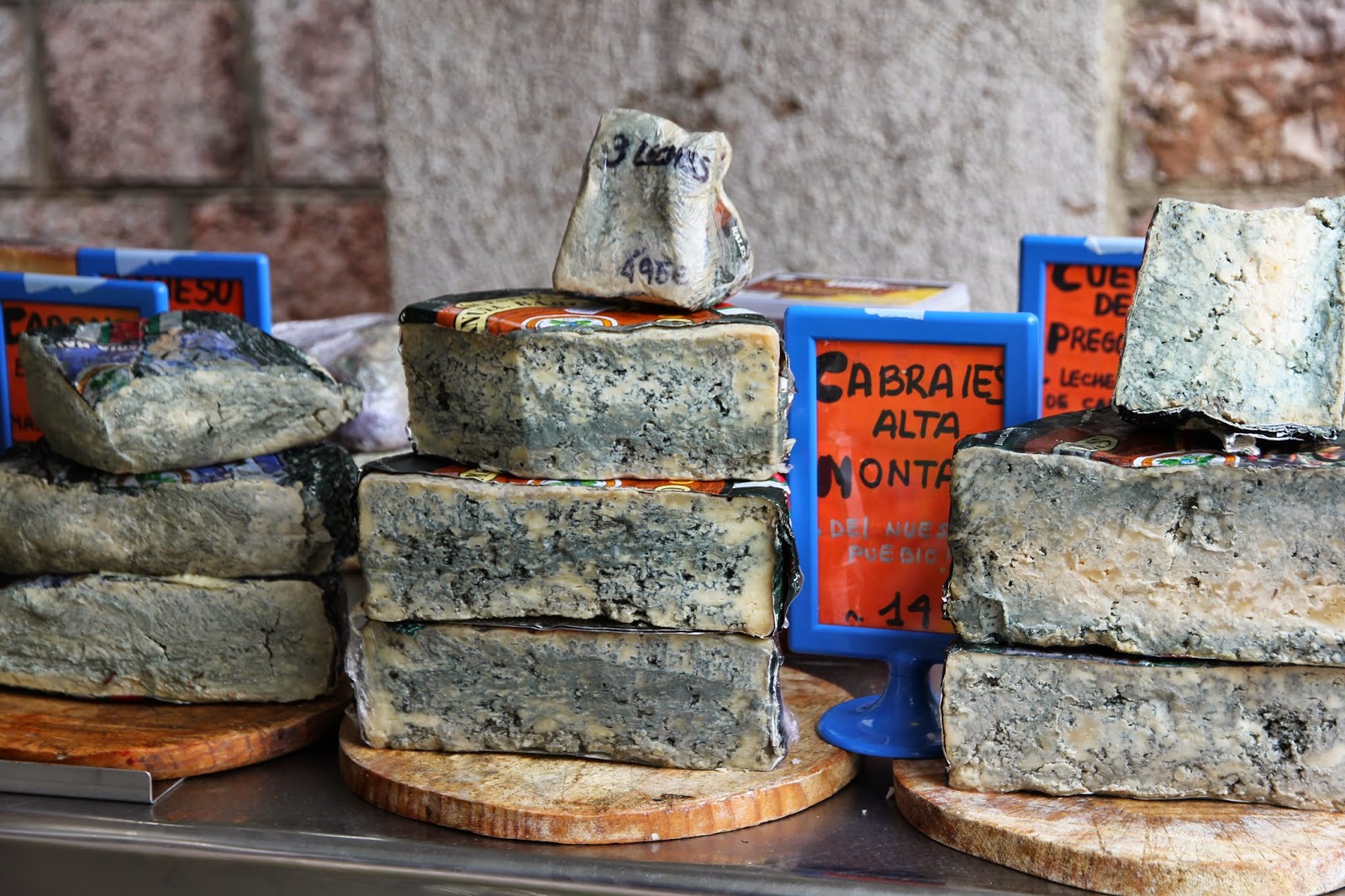WILD AND WOOLLY COUNTRY
The people of the northern Spanish provinces are fiercely independent and over the centuries have successfully resisted attempts from would-be conquerers. In Asturias this is no surprise, as it is rugged and even with roads travel is not always easy. We drive for two hours through narrow river valleys as we head to Fuente De in the heart of spectacular Picos de Europa mountains, scarred by glaciers zillions of years ago.
On our return we head to the famous, but sleepy, village of Covadonga.
Now, Covadonga is an especially significant place in Spain, for it was here in 722 AD that the invading Muslims from Africa were defeated for the first time by Spanish christians and signified the start of the Spanish Reconquista (history lesson over). It is also the site of a tiny shrine built into a cave that houses the Virgen de Covadonga, the Patron Saint of Asturias. The Blessed Virgin Mary statue was directly credited with assisting in the victory over the Moors and so the significance of the shrine is obvious, so much so that even Pope John Paul has visited it. And so have the LegsyBoys!!!
Whilst here we also stumble upon a wedding (the bride, of course, looked beautiful), the interesting component being the traditional Asturian pipers who greeted the happy couple. Did you know that Asturians and Galicians have their very own form of bagpipe?
Just out of Covadonga we stop for dinner at a roadside parrilla (BBQ) restaurant where we dine sumptuously on Asturian delicacies, and the resplendently dressed 'chef' puts on a bit of a show with his cider pouring. We've had a great day.
 |
| Cangas de Onis |
The weather has turned decidedly bad but we've still decided to drive along the coast and check out some more beaches.
 |
| Too cold for los ninos!!! |
 |
| Notice all the graffiti on the rocks |
And what do you know, we found another town called "POO"!
 |
| Poo railway station! |
 |
| Poo multi-sport centre |
Then it's back to Cangas for dinner, and Don L goes for the jugular, the traditional showstopper Fabada Asturiana, a bean stew made from dried large white beans (usually soaked overnight), pork shoulder, bacon, chorizo, saffron, longaniza, and black pudding - it's delicious and filling, especially on a wet and cold night. It's washed down by a bottle of the finest locally produced sidra (at a cost of 1 euro it's a bargain!). Footnote: I found it surprising that the signature dish of Asturias isn't seafood given its ready access to magnificent fresh seafood. And in case you were wondering, sidra (alcoholic apple cider) is poured at arms length to assist with aeration. By dropping from a height it creates artificial 'bubbles', and they have now invented a little contraption to sit on the table that forces a pressure stream against the side of a glass for a similar effect. There is the down side, in that it inspires children to try pouring soft drink, milk, anything really, from a great height and needless to say - missing the glass!)
 |
| Fabada Asturiana - delicioso!!! |
 |
| Local sidra - 1 euro a bottle...bargain |
 |
| Look mum, not even looking! |
 |
| Buzzy tries the table sidra dispenser. |
What a great way to end our Astrian adventure. No frills, plenty of exercise, stunning beauty, and warm and friendly people. It has often been compared to Ireland and it's not hard to understand why. But it's time to point Rocinante's nose west and push on towards our next destination, Santiago de Compostela, St James' resting place and the culmination of El Camino.......



















































No comments:
Post a Comment